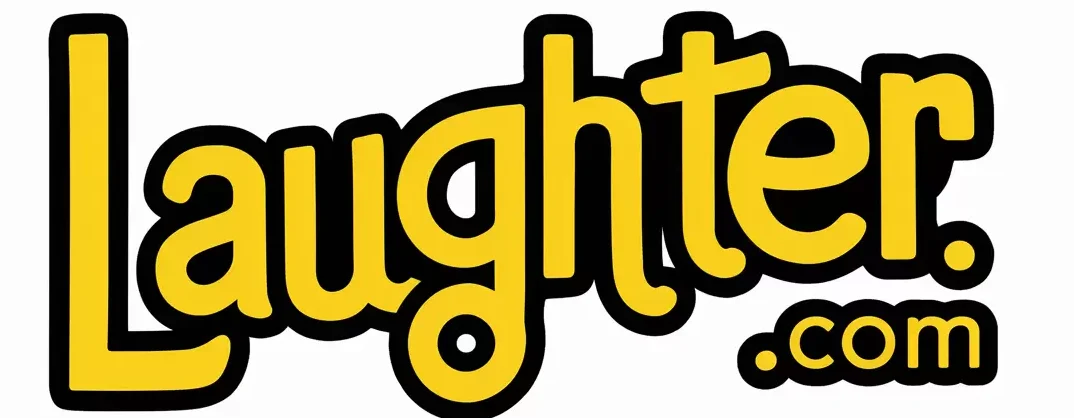
What Is DTF Printing and Why Is It Revolutionising the Custom Apparel Industry?
Direct-to-Film (DTF) printing has emerged as a game-changing technology in the custom apparel decoration industry. This innovative printing method involves printing designs onto a special PET film using water-based inks, applying a powdered adhesive, and then transferring the design onto virtually any fabric through heat pressing. Since its commercial introduction around 2019, DTF printing has rapidly gained popularity among custom printing businesses and their customers alike for its remarkable versatility, exceptional print quality, and cost-effectiveness.
How DTF Printing Works: The Process Explained
Understanding the DTF printing process helps appreciate why it delivers such impressive results:
- Design Preparation: The artwork is prepared in specialised RIP software that optimises the design for DTF printing, including proper colour separation and white underbase creation.
- Film Printing: Special water-based inks containing CMYK colours plus white are printed directly onto a transparent PET film. Unlike other methods, DTF printing lays down a white underbase first, followed by colour layers.
- Adhesive Application: Once printed, the film passes through a powder shaker where hot-melt adhesive powder adheres to the wet ink, creating a bonding layer.
- Curing: The film with powder applied is heated to melt the adhesive particles, creating a smooth, consistent adhesive layer that will bond with the fabric.
- Heat Transfer: The prepared film is positioned on the target garment and heat pressed at approximately 165°C for 15 seconds. This transfers the design from the film to the fabric, creating a durable print.
- Finishing: The carrier film is peeled away while hot, leaving behind only the vibrant design perfectly bonded to the fabric.
7 Key Advantages of DTF Printing Over Traditional Methods
1. Unmatched Fabric Versatility
Unlike DTG (Direct-to-Garment) printing which works primarily on cotton, DTF transfers bond effectively with virtually any textile material including:
- 100% cotton
- Polyester and polyester blends
- Nylon and technical fabrics
- Leather and faux leather
- Silk and delicate fabrics
- Dark and light coloured materials
This universal compatibility eliminates the need for different printing processes for different fabric types, streamlining production.
2. Superior Print Quality
DTF printing consistently delivers exceptional results:
- Vibrant, saturated colours with excellent opacity
- Sharp, detailed images with smooth gradients
- Photo-realistic reproduction quality
- No visible or tactile difference between printed and non-printed areas
- Designs that move naturally with the fabric without cracking
3. Exceptional Durability
DTF prints demonstrate remarkable longevity:
- Withstands 30+ wash cycles without significant fading
- Maintains flexibility without cracking or peeling
- Excellent stretch recovery on elastic fabrics
- Resistant to everyday wear and environmental factors
- Superior colour fastness compared to many traditional methods
4. Production Efficiency
DTF offers significant workflow advantages:
- Minimal setup time compared to screen printing
- No pretreatment required unlike DTG printing
- Ability to prepare transfers in advance for on-demand application
- Quick production turnaround from design to finished product
- Reduced equipment maintenance compared to other digital methods
5. Cost-Effective for Various Order Sizes
DTF printing provides excellent value across different production scales:
- Economical for small batches (1-50 items) unlike screen printing
- More affordable than DTG for medium runs (50-200 items)
- No minimum order requirements
- Reduced material waste compared to other transfer methods
- Lower investment threshold than many alternative technologies
6. Design Flexibility and Detail
The technical capabilities of DTF printing offer creative freedom:
- Unlimited colours within a single design at no additional cost
- Ability to reproduce fine details and small text clearly
- Excellent handling of gradients and colour transitions
- No design size limitations within the film dimensions
- Compatible with special effects like metallic and glow-in-dark inks
7. Environmental Considerations
Modern DTF printing offers eco-friendly advantages:
- Water-based inks with minimal environmental impact
- Reduced water consumption compared to screen printing
- Lower energy requirements than many alternative methods
- Minimal chemical usage unlike traditional textile printing
- Reduced waste through precise application and minimal misprints
Common Applications for DTF Printing
The versatility of DTF printing makes it ideal for numerous applications:
Custom Apparel and Fashion
- Graphic t-shirts and hoodies
- Sports and team uniforms
- Corporate workwear and uniforms
- Fashion samples and small-batch collections
- Performance and athleisure wear
Promotional Products
- Event merchandise
- Corporate giveaways
- Retail products
- Influencer merchandise
- Charity fundraising items
Specialty Products
- Bags and accessories
- Home textiles
- Footwear customisation
- Hard surface decoration via fabric application
- Mixed-media art projects
The Future of DTF Printing: Emerging Trends
As DTF technology continues to evolve, several exciting developments are emerging:
- Expanded Colour Gamuts: Development of expanded ink sets beyond traditional CMYK+White to include fluorescent, metallic, and specialty colours.
- Automation Advancements: Increased automation in the powder application and curing stages, reducing labour requirements.
- Eco-Friendly Materials: Innovation in biodegradable films and adhesives to improve environmental sustainability.
- Software Integration: Enhanced RIP software with AI capabilities for optimised colour management and production efficiency.
- Hybrid Systems: Integration of DTF capabilities with other printing technologies for expanded creative possibilities.
Choosing a DTF Printing Service: What to Look For
When selecting a DTF printing partner, consider these essential factors:
- Print Quality: Review samples to assess colour vibrancy, detail reproduction, and edge definition.
- Durability Testing: Ask about wash testing protocols and durability guarantees.
- Equipment Quality: Inquire about their printer models, powder application system, and heat press specifications.
- Technical Expertise: Evaluate their knowledge of colour management and design optimisation for DTF.
- Customer Service: Assess communication quality, design assistance availability, and problem-resolution approach.
- Turnaround Times: Confirm production timeframes match your project requirements.
- Pricing Structure: Understand their pricing model, volume discounts, and any additional fees.
DTF vs. Other Printing Methods: A Detailed Comparison
DTF vs. Screen Printing
Advantages over screen printing:
- No setup costs or screens required
- Unlimited colours at no additional charge
- Economical for small to medium runs
- No minimum order requirements
- Faster setup and production for complex designs
When screen printing might be better:
- For very large production runs (1,000+ identical items)
- For special ink effects like puff or high-density prints
- When Pantone colour matching is critical
DTF vs. DTG (Direct-to-Garment)
Advantages over DTG:
- Works on virtually any fabric type, not just cotton
- No garment pretreatment required
- More vibrant prints on dark fabrics
- Generally more durable and wash-resistant
- Ability to prepare transfers in advance
When DTG might be better:
- For on-demand single item production
- When the absolute softest hand feel is required
- For businesses already invested in DTG equipment
DTF vs. Vinyl Heat Transfer
Advantages over vinyl:
- No weeding required for complex designs
- Ability to include gradients and unlimited colours
- More breathable and flexible feel
- Often more cost-effective for detailed graphics
- No “plastic” appearance or feel
When vinyl might be better:
- For very simple, single-colour designs
- When a raised, textured effect is desired
- For special finishes like reflective or metallic
DTF vs. Sublimation
Advantages over sublimation:
- Works on all fabric colours, including black
- Compatible with natural fibers like cotton
- No “cold spots” or missed areas in the print
- More vibrant on non-white garments
When sublimation might be better:
- For all-over printing on polyester
- When absolutely zero hand feel is required
- For products with polyester-coated surfaces
Conclusion: Why DTF Printing Is Transforming the Custom Apparel Industry
DTF printing represents a significant advancement in textile decoration technology, offering a rare combination of quality, versatility, and affordability. Its ability to work across diverse fabric types, deliver exceptional print quality, and provide cost-effectiveness for various order quantities makes it the ideal solution for many custom apparel projects.
As the technology continues to evolve and mature, DTF printing is positioned to become the dominant method for high-quality custom apparel production, particularly for businesses seeking flexibility without compromising on quality.
For businesses and individuals looking to create custom apparel that stands out with vibrant colours, exceptional detail, and outstanding durability, DTF printing offers the perfect balance of quality, versatility, and value.
Frequently Asked Questions About DTF Printing
How long do DTF prints last?
High-quality DTF prints typically withstand 30+ wash cycles without significant fading when properly applied and cared for. The durability depends on several factors including the quality of the inks and adhesive used, heat press temperature and pressure during application, and garment care practices.
Can DTF printing be used on any fabric?
Yes, one of DTF printing’s primary advantages is its compatibility with virtually any fabric type. Unlike other printing methods that may be limited to specific materials, DTF works excellently on cotton, polyester, poly-cotton blends, nylon, silk, leather, and most other textiles.
How does the cost of DTF printing compare to other methods?
DTF printing typically offers better value than DTG for small to medium runs while being more cost-effective than screen printing for orders under 100 units. For basic designs on small quantities, vinyl might be cheaper, but DTF becomes more economical as design complexity increases.
What equipment is needed for DIY DTF printing?
A basic DTF printing setup requires a specially modified inkjet printer with DTF inks, PET films, adhesive powder, a powder shaker system, a curing oven or unit, and a heat press. Professional setups typically invest £3,000-£10,000 for entry-level equipment, with commercial systems costing significantly more.
Is DTF printing environmentally friendly?
Modern DTF printing uses water-based inks that are generally more eco-friendly than solvent-based alternatives. The process generates minimal wastewater and requires less energy than many traditional methods. However, the PET films used are typically not biodegradable, though many can be recycled.
What design limitations exist with DTF printing?
DTF printing has few design limitations compared to other methods. It handles fine details, gradients, and unlimited colours within a single design. The main constraint is the maximum size of the film, though designs can be pieced together for larger applications if necessary.
How do I care for garments with DTF prints?
For maximum longevity, wash DTF-printed garments inside-out using cold or warm water (not hot) and mild detergent. Avoid bleach and harsh chemicals. Tumble dry on low heat or air dry. Iron on the reverse side if needed, avoiding direct iron contact with the printed area.







